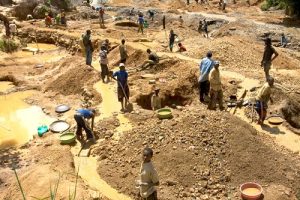
BY GIRMACHEW GASHAW
Though it has been recurrently affected by the drought related impact, Ethiopia won’t impede the action against climate change. Looking what is happening in horn of Africa , Ethiopia, a country with a total population of over 100 million did not prefer to sit idle cursing those who are extremely contributing for today’s environmental phenomena as well as the drought related impact happening here and there.
Instead, the country devise a policy and strategy that help minimize the harm through high level of commitment through creating a common understanding on the matter as per the level it should be aware of . The task was not taken as simple as the country has not gained a coin in order to achieve the target set.
Launched in 2011, the Climate Resilient Green Economy (CRGE) strategy sets that by 2025 Ethiopia will be a middle-‐income country, resilient to climate change impacts and with no net increase in greenhouse gas emissions from 2010 levels. This resilience strategy for agriculture and forestry has been developed as part of the CRGE strategy. It shows that economic growth must be protected againstthe impacts of current and future climate change.
The agriculture and forestry sectors are keys to both national income and household livelihoods. Combined, the sectors make up over two-‐fifths of the national economy (43% of our Gross Domestic Product (GDP) and employ the vast majority (around 80%) of the country’s population. Due to
reliance on rain-‐fed techniques, agriculture is highly vulnerable to weather and thus to future impacts of climate change. Also, future climate change is expected to pose significant impacts on the productivity of our forests.
Since the regime of Emperor Haile-selasse I to present, all the governments have one and same stance in relation to green development. The top government officials have shown their commitment for green legacy even by planting a tree. Even though there were strides, the task done in previous governments has not uplifted the name and reputation of the nation. However, during Prime minster Abiy’s tenure, the country was able to break the world record by planting 350 million trees per day.
The Ethiopian government has consistently made global headlines with ambitious tree-planting targets, since launching its Green Legacy Initiative (GLI) Prime Minister Abiy Ahmed. A target of planting 20 billion seedlings within a period of four years was set. By the fourth year, the country has succeeded in planting 25 billion seedlings by mobilizing more than 20 million citizens in all corners. The development of more than 120,000 nurseries throughout the country has enabled the creation of more than 767,000 jobs, mostly for women and youth.
As Ethiopia proved a trailblazer in the freedom fight of Africa, it has pressed ahead with demonstrating it as a trendsetter in the economic sphere through its Green Legacy Initiative.
The Green Legacy Initiative is a demonstration of Ethiopia’s long-term commitment to a multifaceted response to the impacts of climate change and environmental forest sector development, greening and renewal of urban areas, and integrated water and soil resources management. This has an immense contribution to Ethiopia’s efforts to meet its international commitments such as the Paris Climate Change Agreement, the 2030 Agenda for Sustainable Development, and Agenda 2063: The Africa We Want.
There has been considerable skepticism, particularly among foresters, regarding the big numbers mentioned by the government. But despite the seemingly unrealistic numbers, the GLI has provided a significant boost to forest development and livelihood improvement across the country. The initiative has also provided a critical chance for the government and its partners to use the media to raise public awareness about the importance of planting trees and protecting existing forests.
For Ethiopia, as is the case with most African countries, agricultural activities, which provide income for 80 percent of the population, have ironically been responsible for land degradation that has taken a toll on crop production and fanned the hunger cycle. The mass tree planting exercise conducted in Ethiopia and championed by the Prime Minister Ahmed Abiy has inspired new greening efforts across the world, which is currently plagued by droughts, flooding, soil erosion, and extreme weather conditions as humanity pays for wanton destruction of forests. Under the Green Legacy initiative – where the second most populous country in Africa seeks to restore its landscape.
Considering the overall impact of tree plantation in Ethiopian and neighboring countries economy, the Ethiopian government has been preparing itself to plant 6.3 billion seedlings during the upcoming rainy season as part of the national green legacy initiatives, Agriculture State Minister, Professor Eyasu Elias said.
The State Minister in charge of the Natural Resources Development Division told the local media recently that the country has already prepared 5.4 billion seedlings. Out of the total 6.3 billion seedlings 45 are trees while the rest 55 percent are fruits, animal fodder, and other vital plans.
Over the last four years, some 25 billion seedlings, including trees, fruit, and cattle feeds have been planted as part of the national Green Legacy Initiative, he said. The initiative launched in June of 2019 has been helping Ethiopia to building a green and climate resilient nation rehabilitating degraded land across the country. Tree planting has also been becoming a culture among Ethiopians as more than 30 million people participates every year in the tree planting activities, the state minister noted.
Prime Minister Abiy Ahmed has received the Outstanding African Leadership Award for his Green Legacy initiative, designed to reforest the country and help the nation enhance its agricultural activities.
If Ethiopia has been strengthening such an effort, apart from gaining economical advantage, it will minimize the recurrent drought which is a cause for the death of livestock and displacement of millions of peoples in the horn of Africa. Taking lesson from previous practice, countries in east Africa should stand together to realize the plan stated above.
THE ETHIOPIAN HERALD WEDNESDAY 19 APRIL 2023





